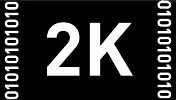

With all that is going on in the world, 2022 is a good time to retell this timeless story. And it is perhaps all the more important to have a contemporary German film version of this German account of that war in which young men of so many nations took up arms out of nationalistic pride, only to be slaughtered, sacrificed, and largely forgotten. Still, Berger's version lacks the immediacy and depth of Lewis Milestone’s American adaptation made in 1930 between the World Wars. Berger and his co-writers maintain the first-person perspective of the book for most of the film but don't include the key sequence when the protagonist Paul returns home on leave and discovers how indelibly changed he's become from those who've not had their eyes opened by experiencing actual combat. Yet the filmmakers do cut away from Paul's perspective to the French and German generals negotiating the armistice. That juxtaposition of those in power setting arbitrary deadlines to end the war and the fate of those doing the on-the-ground fighting, who aren't safe regardless of what the men around the negotiating table decide, is effective but it seems to run counter to what the rest of the picture is attempting.
The sound design, production design, make-up, and practical effects impressively convey the constant physical horrors of war. Unfortunately, the digital photography and extensive post-production colour-grading erode some of that meticulous craft and detail, stripping the film of much of its realism. The picture has a manufactured precision in its visual look that undercuts the random terror and organically unpredictable qualities of what these images are capturing. The movie is not rendered like a first-person-shooter video game like Sam Mendes’s 2019 all-in-one-pseudo-take WWI drama 1917, but its uncanny digital clarity does resemble a video game in ways that take us out of the drama. While hardly the most egregious example in recent years of this now all but de rigueur approach to photography and post-production, the synthetic qualities of this latest version of All Quiet on the Western Front prevent it from fully taking hold.




